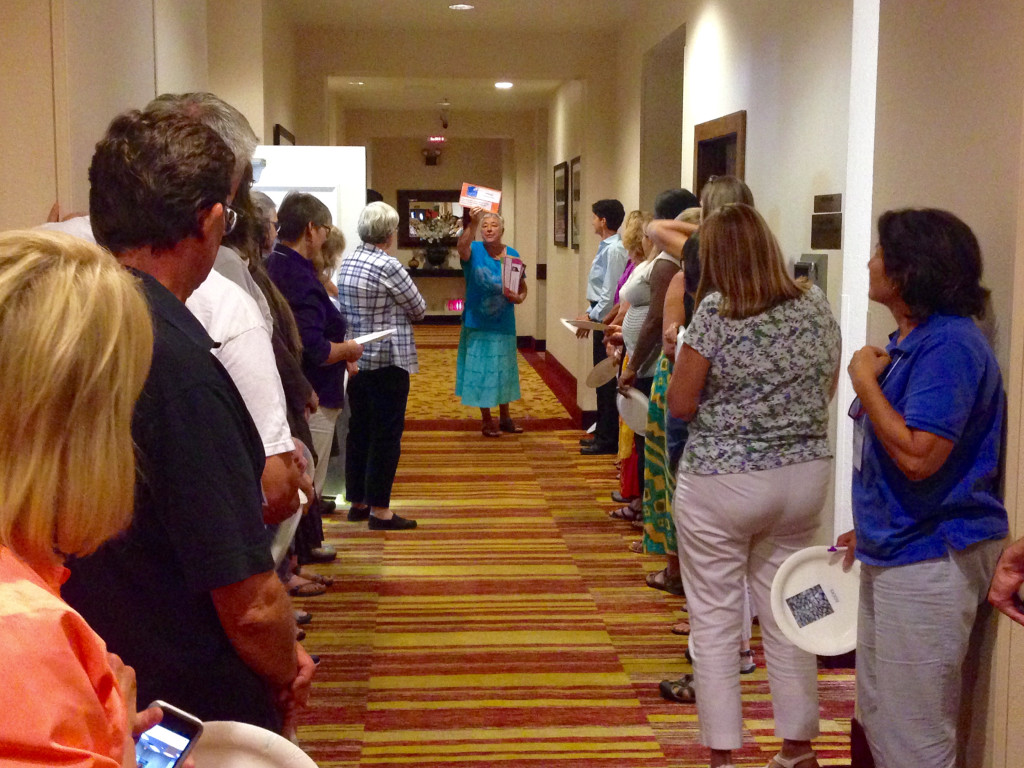We’ve just returned from the Teacher Ambassador Institute in Folsom, California, where despite the temperature peaking at 110 degrees, we were all able to keep our cool and enjoy a productive workshop.
Because the number of teachers interested in the Education and the Environment Initiative (EEI) Curriculum continues to skyrocket, we decided this year to expand our annual Teacher Ambassador (TA) training institute to accommodate the larger group of teachers and individuals advocating and leading trainings for EEI in their schools. Ten Strands hosted double the participants this year as compared to last year’s event, and included 45 people from four different cohorts: the Teacher Ambassador (TA) Program, the Office of Education and the Environment (OEE), the California Regional Environmental Education Community (CREEC) and the Alliance for Climate Education (ACE). Organized by OEE and our staff at Ten Strands, the institute featured deep dives into EEI and the Next Generation Science Standards (NGSS), EEI and the Common Core State Standards (CCSS), and techniques for leading EEI workshops. Luckily we had an indoor conference room and fresh iced tea to go around!
We kicked off the three-day institute on June 29th with an inspiring performance by Rebecca Anderson and Zena Zendejas from ACE. They demonstrated to the group how ACE inspires high school students across the United States to take action on climate change. They have reached nearly 2 million students through their assemblies, with an impact of approximately 342,000 students taking action. Check out what they do here.

The next day we had Chris Breazeale, Science Consultant from the California Department of Education (CDE), and Dr. Gerald Lieberman, lead consultant on the EEI, kick off the NGSS section of the institute. For more information about NGSS, how they relate to the EEI, and the work we are doing around it at Ten Strands, check out Jerry’s blog post here. The TAs were particularly happy with this session as many teachers have been wondering how to teach these new science standards in the classroom—some of them for the first time. TAs got a better understanding of how teachers should be connecting what they are teaching to NGSS and ways in which the EEI Curriculum is a transitional resource for teaching the new standards. A group exercise had the TAs take EEI Curriculum units, connect them to NGSS, and then share with the rest of the participants their results.

After lunch, the TAs jumped into a lively session connecting EEI and CCSS with Bunnie Hale, a TA who has been leading trainings since the EEI Curriculum was first introduced. Bunnie brought student work and led the group in activities from the EEI Curriculum that correlate to CCSS. TAs were also asked to work in groups to connect a specific EEI Curriculum unit to CCSS. The day ended with a Q&A session on how to handle the most challenging aspects of EEI training workshops with four seasoned TAs.

After a long day inside, participants of the institute enjoyed kayaking and paddleboarding on Lake Natoma. There was nothing like jumping into the river in that 110-degree weather!

The last day of the retreat featured more training takeaways and a session from CREEC on the ways they are able to connect teachers to nonformal providers of environmental education. The institute closed with engaging approaches to training teachers on the EEI Curriculum from Kurt Holland, and a showcase on project-based learning presented by teacher Jim Bentley demonstrating how he uses the EEI curriculum with his 6th graders.

I was truly inspired by the participants who attended this year’s institute. So much hard work in the 2014-15 school year has been put into increasing the presence of environment-based education in California’s public schools, and it is paying off thanks to OEE, the TA program and CREEC. Collectively they have put on 53% more EEI trainings and trained 71% more teachers than last year. Now with new partners, such as ACE, I can’t wait to see where our numbers are this time next year!


